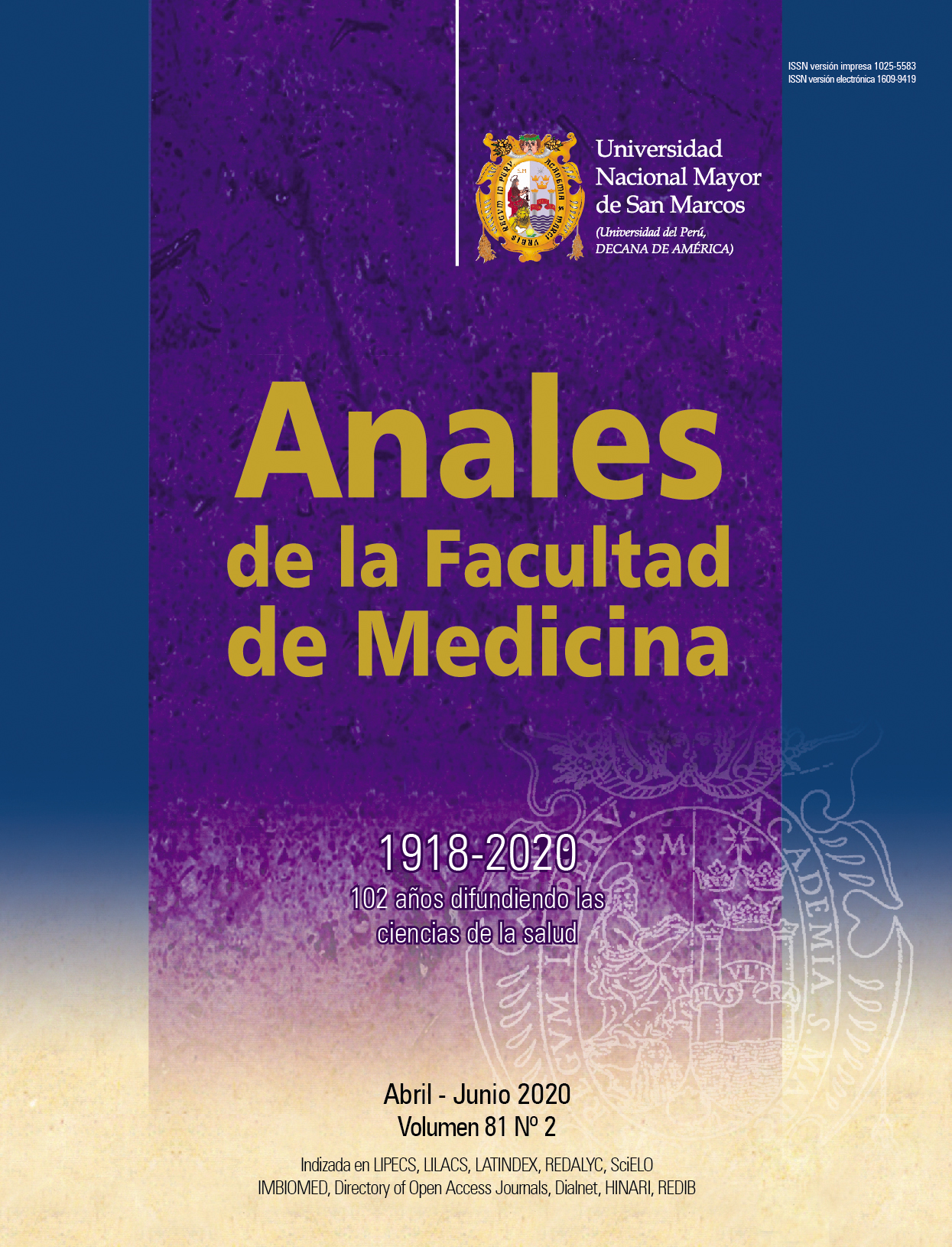Biological and molecular characterization of Panstrongylus sp. native of Peru
DOI:
https://doi.org/10.15381/anales.v81i2.18157Keywords:
Molecular Biology, Panstrongylus, Chagas Disease, PeruAbstract
Objective. To determine the biological and molecular characteristics of the Panstrongylus sp. native to northern Peru. Methods. Observational, descriptive study. Biological material from 5 different regions of northern Peru was used, and a sample of 50 specimens was selected by intentional sampling. For the characterization of the specimens at the molecular level, the ITS-2 marker of ribosomal DNA was used, using the PCR technique. Results. 100% of the samples were classified as Panstrongylus herreri. At the molecular level, 3 different patterns of the ITS-2 band were observed: 960bp, 800bp and 750bp. Conclusion. 100% of the samples were Panstrongylus herreri, captured in intra-household environments in northern regions of Peru, with an ITS-2 pattern.
Downloads
Published
Issue
Section
License
Copyright (c) 2020 Anales de la Facultad de Medicina

This work is licensed under a Creative Commons Attribution-NonCommercial-ShareAlike 4.0 International License.
Those authors who have publications with this magazine accept the following terms:
- Authors will retain their copyrights and guarantee the journal the right of first publication of their work, which will be simultaneously subject to Creative Commons Attribution License that allows third parties to share the work as long as its author and its first publication this magazine are indicated.
- Authors may adopt other non-exclusive licensing agreements for the distribution of the version of the published work (eg, deposit it in an institutional electronic file or publish it in a monographic volume) provided that the initial publication in this magazine is indicated.
- Authors are allowed and recommended to disseminate their work over the Internet (eg: in institutional telematic archives or on their website) before and during the submission process, which It can produce interesting exchanges and increase quotes from the published work. (See El efecto del acceso abierto ).



